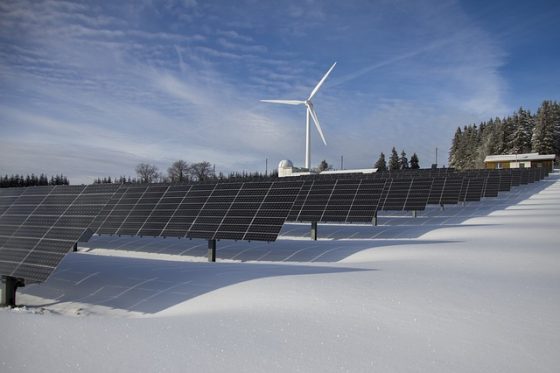Background :-
- The ‘Ministry of New and Renewable Energy’ (MNRE) deals with the renewable energy in India. In the early 1980s, India was the first country to setup a ministry of non conventional energy resources.
Why renewable energy :-
- By using non-renewable energy sources like coal, we will run out of coal and other fossil fuels. These energy sources also pollute environment and are contributing to global warming with greenhouse gas emissions. Hence, renewable energy resources are the best alternatives as these are not finite.
- With using renewable energy resources, pollution levels will be dropped and thereby public health will be improved.
- By setting up solar panels on rooftop of every home and other buildings, we can reduce a lot of economic burden to produce or buy power. It is a win-win situation for citizens as well as government.
Limitations of renewable energy :-
- These sources depend on weather, and hence cannot assure continuous production. For example, solar energy depends on sunshine. If it is a rainy season, we cannot completely depend on this source.
- Solar panels are not easily degradable. The negative effects of these panels while disposing is not completely analysed yet.
- Setup of renewable energy plants requires huge investment and large area of land.
Types and usage of renewable energy resources :-
- Hydro power: Hydro power forms the largest source of energy. It constitutes over 43 per cent of the total renewable power generation installed capacity. India is the 7th largest producer of hydroelectric power in the world. In FY 2016-17, the total hydroelectric power generated in India was 122.31 TWh with an average capacity factor of 33%.
- Wind power: The country ranks fourth in the world in terms of total installed wind power capacity. India includes 27.441 GW of wind power alone. Wind power accounts for 14% of India’s total installed power capacity.
- Solar power: India has a high solar ionization and uses solar power the most among the non-renewable resources. Solar power in India has been growing at a rate of 113% year over year. It is around 18% lower than the average price for electricity generated by coal-fired plants.
- Biomass power: Biomass power includes installations from biomass combustion, biomass gasification and bagasse co-generation. MNRE has also estimated surplus biomass availability at about 120 – 150 million metric tones per annum covering agricultural and forestry residues. Hence, this corresponds to a potential of about 18,000 MW of power.
Initiatives by the Indian government :-
- The government is encouraging the adoption of renewable resources by offering various incentives. Some of the incentives include generation-based incentives (GBIs), fiscal incentives, etc and also concessional finance, capital and interest subsidies.
- MNRE decides to provide custom and excise duty benefits to the solar rooftop sector. This will lower the cost of setting up as well as generate power thus boost growth.
- Narendra Modi, the present Prime Minister of the country has stated of a model city. This city’s power sources should ideally be solar energy. He also stated that bio-ethanol refinery projects should be accelerated to control the country’s dependency on fossil fuels.
- The Union Cabinet has approved raising of bonds worth Rs.2,360 crores by the Indian Renewable Energy Development Agency (IREDA). Various renewable energy projects has thus used this money in the fiscal year of 2017-18.
- The Union Cabinet under Narendra Modi has also given its approval for utilization of 400 hectares of un-cultivable farm land at the Central State Farm (CSF) in Sri Ganganagar District, Rajasthan. This land is hence used for setting up of a solar Power Plant of capacity exceeding 200 MW.
Conclusion :-
The government of India has set a target of 175 GW renewable power installed capacity by the end of 2022. Implementation of major programmes and schemes can thus help in achieving this goal. Solar park, Solar Defence Scheme, Solar Scheme for CPUs, Solar PV power plants on Canal Bank and Canal Tops, Solar Pumps, Solar rooftops etc have been launched during the last 2 years. Thus, the dream of a model city with power supply from renewable resources is not very far.
Afterwords:- Feel free to comment your thoughts and opinions in the comments section below. Subscribe to our blog to read answers to latest GD topics.
Copyright @ Group Discussion Ideas

